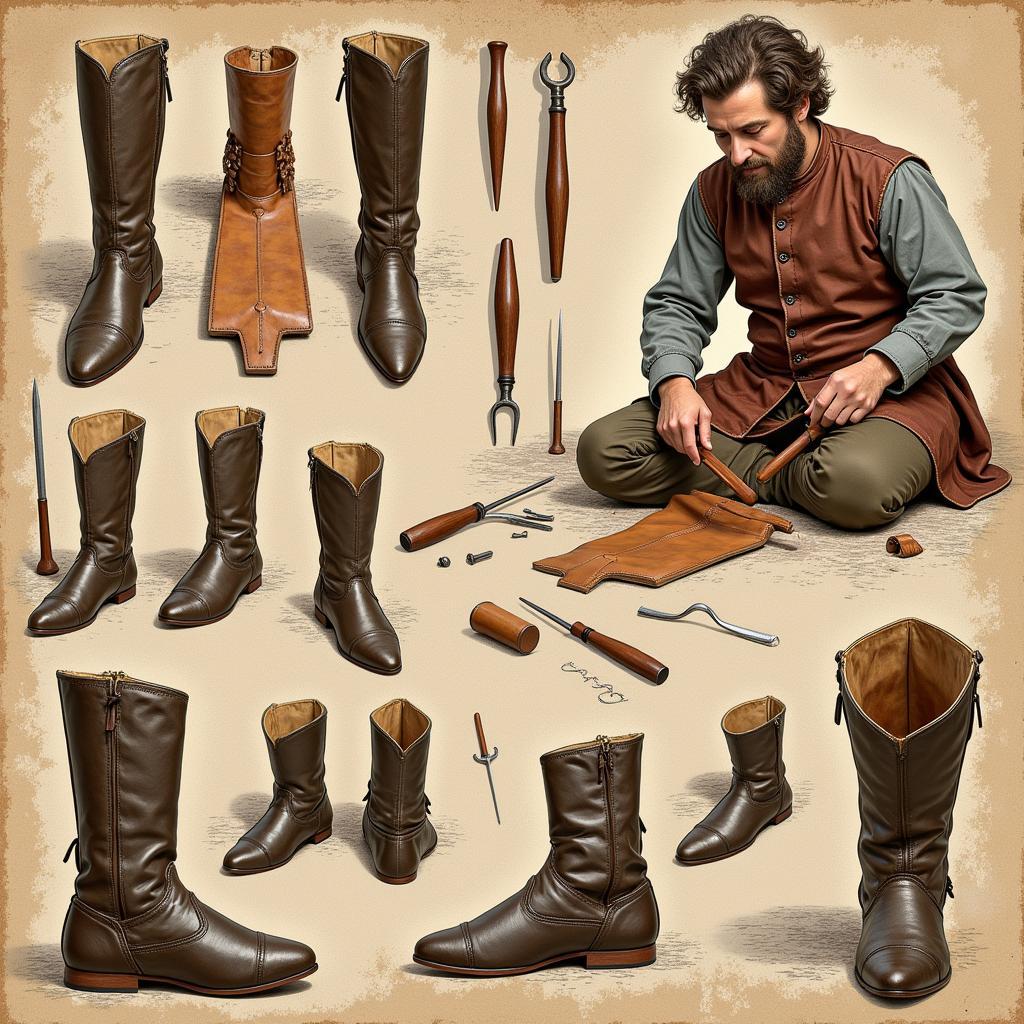14th-century shoes offer a fascinating glimpse into the daily lives of people in the Middle Ages. From the practical peasant’s shoes to the extravagant footwear of the nobility, this era showcased diverse styles and materials, reflecting social status and evolving fashion trends. This exploration delves into the world of 14th-century footwear, examining the construction, materials, and social significance of shoes during this period.
Types of 14th Century Shoes
Several distinct shoe styles emerged during the 14th century, catering to different social classes and purposes. Peasants typically wore simple, functional shoes made from readily available materials like leather or wood. These were often closed-toe designs, providing protection against the elements and the rough terrain. In contrast, the aristocracy favored more elaborate footwear. Poulaines, with their dramatically pointed toes, became a fashionable statement for the wealthy. These shoes often featured intricate decorations, rich fabrics, and vibrant colors.
For those involved in specific occupations, specialized footwear was essential. Workers might have worn sturdy clogs or boots for added protection, while soldiers relied on heavy leather boots for combat. This variety highlights the practical and social considerations influencing footwear choices in the 14th century.
Materials and Construction of Medieval Footwear
Leather was the most common material for 14th-century shoes, thanks to its durability and availability. Animal hides were tanned and treated to create a strong, flexible material suitable for crafting various footwear styles. Other materials, such as wood, fabric, and even cork, were also used, particularly for specific shoe types or decorative elements.
The construction of 14th-century shoes involved skilled craftsmanship. Shoemakers, or cordwainers, meticulously cut and shaped the leather, stitching it together using various techniques. They often used wooden lasts to create the desired shape and fit of the shoe. The process was labor-intensive, requiring specialized tools and expertise.
 Quy trình làm giày trung cổ thế kỷ 14
Quy trình làm giày trung cổ thế kỷ 14
The Social Significance of 14th Century Shoes
Shoes in the 14th century served as more than just protection for the feet. They became important indicators of social status and fashion. The length and style of the poulaine, for instance, directly reflected the wearer’s wealth and position in society. Longer, more extravagant poulaines were favored by the upper classes, while shorter, more practical versions were worn by those of lower rank. This visual distinction played a crucial role in reinforcing social hierarchies.
Beyond status, 14th-century shoes also offered insights into cultural trends and individual expression. Decorative elements, such as buckles, embroidery, and contrasting colors, allowed individuals to personalize their footwear and showcase their fashion sense. Shoes became a medium for self-expression within the confines of societal norms.
Were 14th-century shoes comfortable?
While functionality played a role, comfort wasn’t always a primary concern, especially for fashionable footwear. Poulaines, with their exaggerated pointed toes, likely presented challenges in terms of comfort and mobility.
How were 14th-century shoes made?
Skilled craftsmen, known as cordwainers, meticulously crafted shoes by hand using leather, wood, and other materials. The process was time-consuming and required specialized tools and expertise.
Conclusion: Stepping Back in Time with 14th Century Shoes
From the practical footwear of the working class to the extravagant styles of the nobility, 14th-century shoes offer a unique perspective on medieval life. These artifacts reveal not only the craftsmanship and materials of the era but also the social significance and fashion trends that shaped footwear choices. By exploring these historical remnants, we gain a deeper understanding of the people who walked in these shoes centuries ago.
FAQ
- What were the most common materials used to make 14th-century shoes?
- What were poulaines, and who wore them?
- How did 14th-century shoes reflect social status?
- What types of shoes did peasants typically wear?
- What were some of the challenges of wearing 14th-century shoes?
- Where can I find more information about 14th-century footwear?
- Are there any surviving examples of 14th-century shoes that I can view today?
Need help with your “Đội Bóng Đá” needs? Contact us at Phone Number: 0909802228, Email: doibongda@gmail.com or visit us at 101 Đ. Lý Chiêu Hoàng, Phường 10, Quận 6, Hồ Chí Minh, Việt Nam. We have a 24/7 customer service team ready to assist you.